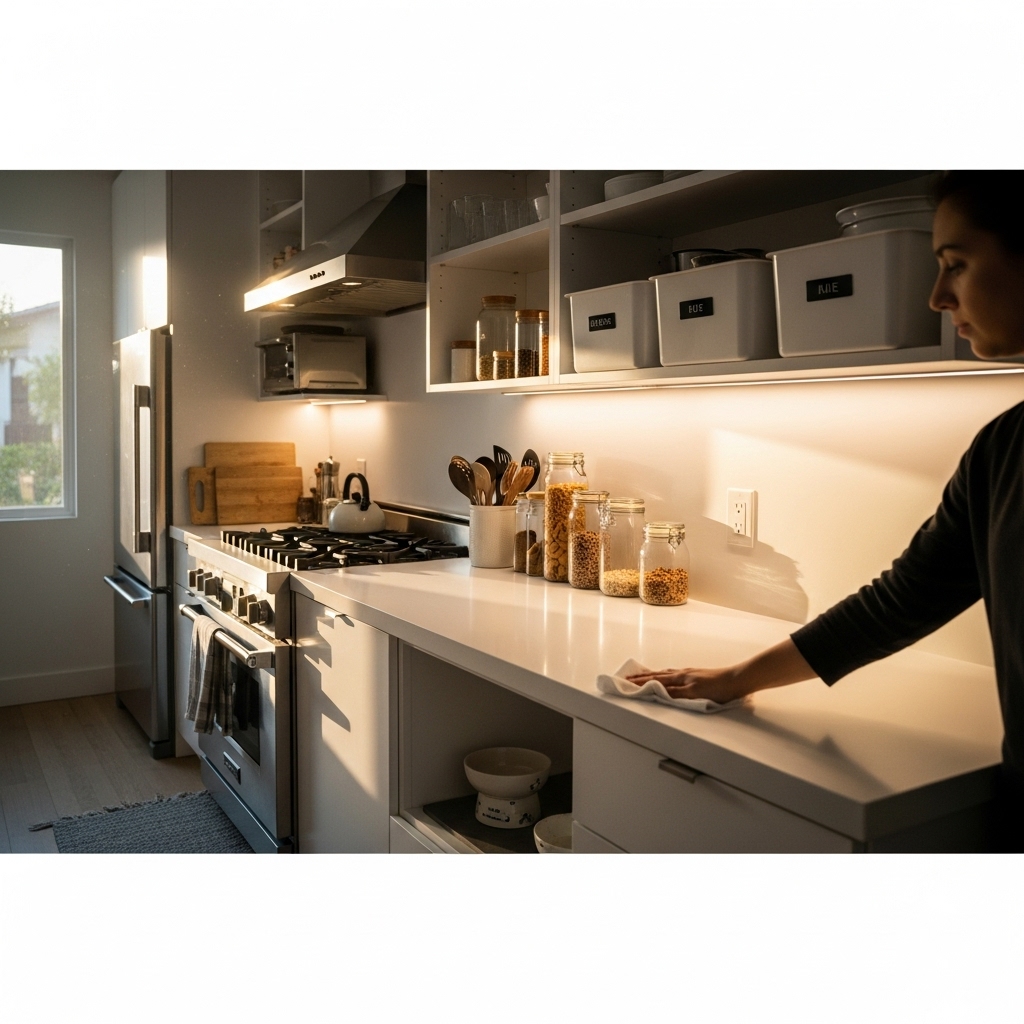Maintaining Rodent Sanitation in Los Angeles: A Local’s Guide
Keeping a Los Angeles home truly clean in the rodent sense is less about perfection and more about rhythm. In a city where coastal breezes mingle with canyon winds and backyard citrus ripens almost year-round, food aromas and shelter opportunities abound. That’s why building a practical routine for rodent sanitation is essential. It’s the difference between constantly reacting to surprises and calmly preventing them. The most successful homeowners don’t necessarily clean more; they clean smarter, focusing on the habits that remove attractants, reveal early signs of activity, and make every other prevention tactic more effective.
From Craftsman homes with roomy basements to stucco bungalows set on slabs, LA architecture varies, but the fundamentals of sanitation are universal: protect food, control clutter, manage moisture, and monitor the spaces you don’t visit daily. In practice, that means developing an eye for small details—the bag of pet kibble that sits open for convenience, the cardboard boxes in the garage that have quietly become nesting supplies, or the laundry room drip pan that holds just enough water to interest a thirsty visitor. Over time, tuning in to these details creates a home that is naturally unappealing to rodents.
Design a Weekly and Seasonal Routine
To maintain rodent sanitation without feeling overwhelmed, map your tasks to a weekly and seasonal cadence. Weekly focus goes to kitchens and pet areas because they generate the most consistent attractants. Wipe down counters, sweep floors, clean under appliances where crumbs accumulate, and store food in sealed containers. Rotate pantry items regularly, both to reduce waste and to spot any signs of gnawing or droppings early. If you feed pets outdoors, bring in bowls at night and rinse them before storing, so there are no lingering scents.
Seasonal focus belongs to storage and building envelope areas: attics, crawl spaces, garages, and sheds. In the spring and fall, when temperatures and moisture shift, take a slow walk through these spaces. Replace damaged weatherstripping, look for light shining through door edges or utility gaps, and scan for droppings, rub marks, or disturbed insulation. These checks dovetail nicely with broader home maintenance and give you a chance to address small vulnerabilities before they become problems.
Smart Food and Waste Management
In a city known for backyard gatherings and farm-fresh groceries, it’s easy for food waste and packaging to accumulate if you’re not intentional. Rodents are resourceful and will find calories where they can—compost piles, bird seed, open pet food, and even residue on recycling. Keep compost in sealed systems, and break down boxes to avoid cardboard towers that provide cover and nesting material. Rinse recyclables promptly and keep lids tight on outdoor bins. On green waste days, contain rinds, peels, and citrus windfalls in lidded bins rather than leaving yard bags curbside overnight.
Inside, think of your pantry like a well-run market stall. Glass or heavy plastic containers with tight lids make food harder to access and simpler to organize. Labeling helps you rotate older items forward, reducing the odds that long-forgotten food becomes a magnet. If you love baking, store flours and grains in sealed containers, not their original bags, which rodents can easily breach. These simple choices transform kitchens into environments that don’t reward opportunistic visitors.
Control Clutter, Reveal Signs
Clutter and sanitation are opposites. Piles hide evidence and create tunnels vehicles for movement. Garages are especially vulnerable in LA because we use them for everything: storage, home gyms, art studios, and sometimes cars. Replace cardboard with sealed bins, raise items off the floor if possible, and maintain at least a foot of visibility along walls. This airy border reveals fresh droppings or gnaw marks quickly, giving you the chance to respond early. Attics benefit from the same approach. Keep pathways clear to the access hatch, and avoid storing soft materials that double as nesting.
In living areas, focus on the areas behind appliances and furniture where crumbs and dust collect. A monthly pull-out of the stove or refrigerator is a powerful habit; it collapses potential food sources and lets you inspect for signs. Combine these cleanups with a visual sweep of baseboards and under-sink cabinets where pipes penetrate. Anywhere utilities enter is worth a look because minor gaps can become major gateways.
Manage Moisture and Ventilation
Even in drought cycles, water is a draw. Check for condensation around HVAC lines, slow drips under sinks, and irrigation overspray that wets foundation soil. Rodents are more likely to explore an area that offers both shelter and moisture, so be methodical about drying up opportunities. Outside, adjust sprinklers so they don’t pound stucco or soak the base of fences, and consider drip irrigation for precise watering. Inside, make sure bathroom fans and the dryer vent outside—not into attics or crawl spaces where warmth and moisture combine to create an inviting microclimate.
Ventilation complements sanitation. When attic or crawl spaces are properly vented and clean, odors dissipate faster, and surfaces dry more quickly after coastal fog or rain. This reduces the persistence of scents that might otherwise signal a safe, established nesting area to passing rodents. Good airflow coupled with clean surfaces is one of the quiet power moves in long-term prevention.
Integrate Exclusion with Sanitation
While this guide focuses on maintenance, no sanitation plan is complete without thinking about entry points. You don’t have to tackle every seal in one weekend. Start with door sweeps and weatherstripping; these offer instant returns and often improve comfort and energy efficiency. Then, look up—rooflines, attic vents, and gaps around utility penetrations are common access points. Screens that are tight and intact, plus properly capped vents, change the calculus for rodents cruising along fences and power lines. With fewer entry options, your sanitation work inside becomes dramatically more effective.
When you combine exclusion with clean, organized interiors, traps—if used—have fewer competing food sources and become tools for monitoring rather than rescue missions. If you choose to bring in professional support, prioritize services that integrate these components. Providers who emphasize safe cleanup, source removal, and sealing help lock in gains so you’re not repeating the same efforts every season, a hallmark of sustainable rodent sanitation.
Attics, Crawl Spaces, and Special Considerations in LA
Los Angeles homes tell stories in their attics and crawl spaces. Additions that created dramatic ceilings sometimes left voids that are hard to reach. Older homes might have knob-and-tube remnants alongside newer wiring, or patchwork insulation that records decades of use. Approach these spaces with caution and intention. If you find signs of activity, prioritize safe removal of contaminated material and targeted sanitizing before adding new insulation or storage. Replacing insulation prematurely can trap odors, leaving you with a cleaner-looking space that still carries the scent signature of previous residents.
Crawl spaces deserve similar attention. Look for burrows near foundation vents, ensure vents are screened, and confirm that dryer exhaust terminates outside. If your home sits near canyons or greenbelts, consider a quarterly perimeter walk. Rodents follow predictable travel lines—fence tops, utility conduits, and thick hedges—so trimming back vegetation and removing debris is as much a sanitation task as it is landscaping.
Daily Habits That Add Up
Small, repeatable actions win the long game. Wipe the stovetop every night, even if you didn’t cook much. Empty small trash cans before bed, especially if you discarded meat or ripe fruit. Store dog treats in jars and keep the mudroom tidy so dropped snacks don’t pile up. Over time, these actions form a baseline cleanliness that makes new signs stand out immediately. The goal is not to eliminate every crumb, but to remove the consistent, easy calories that incentivize rodents to keep visiting.
Consider the role of scent. Strong-smelling foods, from citrus peels to fish skin, advertise themselves. If you love to cook boldly, great—just take the extra step to ventilate and to package leftovers tightly. In garages and sheds, reduce odor by keeping garden seed and fertilizers sealed, and keep mop buckets and rags washed and dry so they don’t create damp, organic smells that linger.
Monitoring Without Obsession
It’s easy to swing from indifference to obsession when you first spot activity. A healthier path is steady monitoring. Keep a simple notebook or phone note with dates and observations: a droppings sighting in the garage, a replaced weatherstrip in spring, a pantry reorganization before the holidays. This record turns feelings into facts and helps you identify patterns—like activity after major rains or when nearby construction starts. With patterns visible, you can time your sanitation push ahead of the curve and head off issues before they escalate.
If monitoring shows repeated activity in the same areas despite good sanitation, that’s a sign to focus on exclusion or to bring in support for hard-to-reach spaces. Persistent problems often trace back to one or two structural vulnerabilities you can’t see from the ground. A short visit from a seasoned technician who knows LA building styles can pay for itself in reduced frustration and time saved.
Frequently Asked Questions
What is the single most important habit to prevent rodents? Consistent food control. Store everything edible in sealed containers, clean kitchen surfaces nightly, and bring pet food indoors. Remove easy calories, and you remove the primary reward that keeps rodents exploring your space.
How often should I clean behind appliances? Monthly is a great cadence. It balances effort with impact, keeps you alert to early signs, and makes deeper seasonal cleanups faster because debris doesn’t have months to accumulate.
Do essential oils or scented products repel rodents? Strong scents can sometimes deter exploration briefly, but they are not a substitute for sanitation and exclusion. Think of them as minor, temporary aids at best, not a primary strategy.
Are attics and crawl spaces really that important? Absolutely. These areas often host the earliest signs and can harbor contamination that affects indoor air. Keeping them clean and ventilated, and addressing breaches promptly, is foundational to long-term success.
How do I handle fruit trees and vegetable gardens? Harvest promptly and compost responsibly in sealed systems. Don’t let ripe fruit carpet the ground, and avoid leaving produce boxes or trimmings exposed overnight. These simple steps preserve the joy of homegrown food without inviting pests.
What if I live near restaurants or alleys with dumpsters? Increase your cadence of checks and double down on sealing food, managing trash, and controlling clutter. Where exterior pressures are high, interior sanitation must be especially consistent to keep the edge.
When should I call for professional help? If signs persist despite good habits, if you hear activity in ceilings or walls, or if you discover widespread contamination in insulation, bring in help. A combined approach—inspection, sanitation, and exclusion—often resolves problems faster and more completely.
Will better sanitation help with odors I can’t locate? Yes. Removing old cardboard, washing hard surfaces, and addressing attic or crawl space contamination can dramatically reduce mystery odors, especially after warm weather or wind events that stir up dust.
If you’re ready to turn steady habits into lasting results, align your home with proven best practices in rodent sanitation. Start with the easy wins, build momentum, and, if needed, bring in support that respects your routines and amplifies them for a cleaner, calmer Los Angeles home.

